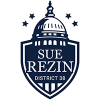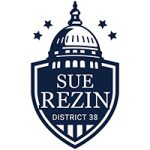The Illinois School Funding Reform Commission met this week as part of the ongoing effort to find ways to revamp the way the state funds schools. The Commission examined two central issues during this meeting: hold harmless provisions and education funding distribution models.
First, the Commission explored the concept of “hold harmless,” what hold harmless means and the history of the different hold harmless provisions that can be found in the current school funding formula. They also considered the factors that contribute to losses in GSA, and therefore drive the need for a hold harmless, as well as other factors to consider when implementing a new formula as it relates to the need for hold harmless provisions.
The Commission members learned that one main purpose of any hold harmless provision is to provide school districts with a level of predictability and stability during times of transition to a new or changing funding formula. Senate Republican members of the Commission noted that it will be imperative that school districts are given time to make adjustments in response to changes to the school aid formula. They pointed out that, with a formula change, schools may have to make changes at the local level, which can impact staffing and school programs.
It was also noted during the meeting that hold harmless provisions, while good for phasing-in a new formula, are also a diversion of the amount of available funding from the intended goals of a revised state funding system for education funding. As such, it was emphasized the hold harmless provisions should be reviewed to ensure that equitability of school funding doesn’t become compromised during this process.
“Everyone is competing for precious education dollars,” Rezin said. “Hold harmless gets us past the whole idea of winners and losers.”
The Commission members also went over what is meant by a “distribution model.” They confronted the issue of how to most effectively distribute the limited resources available in Illinois in order to achieve adequacy and equity for Illinois schools. The commission was given a brief explanation of how the state’s current school funding system distributes money as well as how alternative proposals, including the Evidence Based Model (HB 828), distribute funding. Additionally, a brief explanation was provided as to how the FY17 budget (SB 2047) distributes funds to schools.
At the upcoming October 5 meeting the Commission members are expected to explore property taxes in Illinois and their effect on the state’s funding formula.
In July, Governor Bruce Rauner created the Illinois School Funding Reform Commission to make recommendations to the General Assembly to revise the current school funding formula by February of 2017.
The Commission is comprised of 25 members designated by the Governor and the legislative leaders. The Senate Republican caucus is represented on the Commission by Senators Jason Barickman, R-53rd District, Bloomington, Karen McConnaughay, R-33rd District, St. Charles, Sue Rezin, R-38th District, Morris, and Dan McConchie, R-26th District, Lake Zurich.

